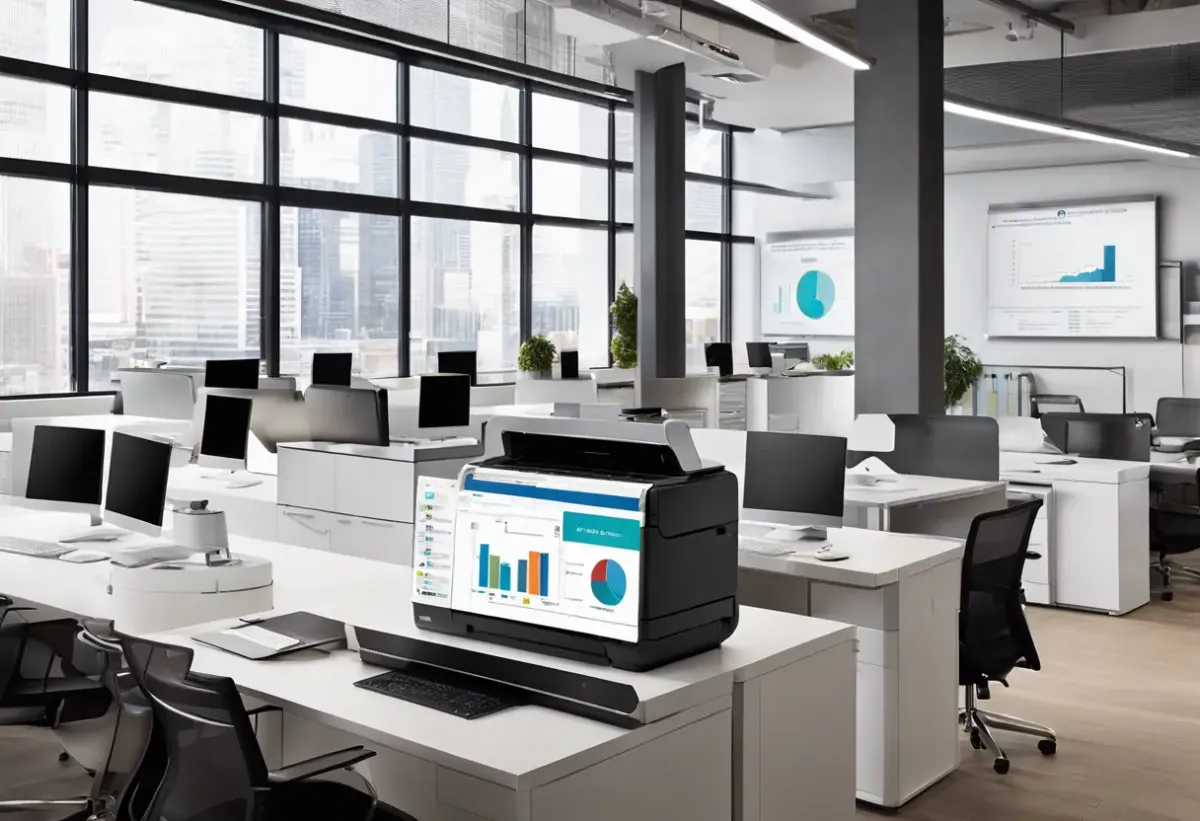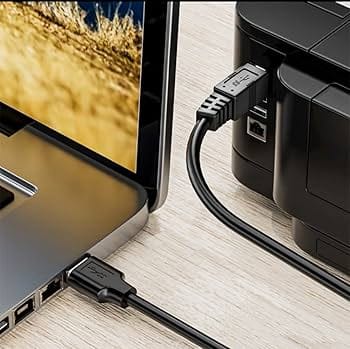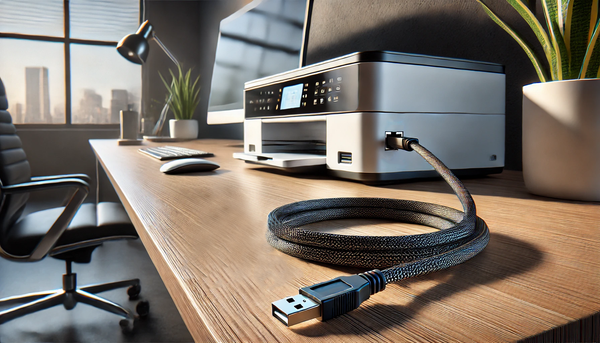Managing Costs: Multi-Departmental Printer Billing Made Easy

Introduction to Multi-Departmental Printer Billing
Managing print costs effectively requires a detailed understanding of how resources are utilized across various departments. Multi-departmental printer billing systems offer a structured approach to allocating and tracking printing expenditures. Such systems help in ensuring that the costs are transparently distributed and justified according to departmental usage.
Key Elements of Multi-Departmental Printer Billing
Multi-departmental printer billing encompasses several critical components:
- Usage Tracking: Each department’s printing activities are tracked using advanced logging software. This includes the number of pages printed, color versus black-and-white printing, and the types of documents processed.
- Cost Allocation: Costs are allocated based on predefined criteria, such as per-page cost, color usage, or paper type. This allocation helps in charging departments accurately for their usage, promoting accountability.
- Reporting and Analytics: Automated reports provide detailed insights into printing patterns and expenses. Analytical tools further assist in identifying trends and areas where cost savings can be achieved.
- Department Codes: Unique codes are assigned to departments to ensure accurate billing. Users must enter these codes prior to printing, associating the print job with the respective department.
- User Authentication: Robust authentication mechanisms, like employee ID verification, ensure that only authorized personnel can initiate print jobs, preventing unauthorized use and potential waste.
Benefits of Multi-Departmental Printer Billing
- Cost Transparency: Departments receive clear, itemized bills, providing visibility into their printing expenses.
- Budget Control: Enables departments to monitor and manage their budget more effectively by understanding their printing costs.
- Enhanced Accountability: Departments are held accountable for their printing habits, which encourages responsible usage.
- Environmental Sustainability: By tracking and analyzing printing patterns, organizations can identify opportunities to reduce paper and toner waste, supporting sustainability initiatives.
Implementation Steps
To implement a multi-departmental printer billing system:
- Assessment: Evaluate current printing infrastructure and departmental needs.
- Software Selection: Choose a billing software that integrates seamlessly with existing printers and network systems.
- Pilot Testing: Conduct a pilot test to identify potential issues and gather feedback.
- Training: Provide thorough training for staff to ensure smooth adoption.
- Ongoing Maintenance: Regularly update the system and conduct audits to ensure accuracy and reliability.
Adopting an efficient multi-departmental printer billing system can transform how organizations manage their printing resources, leading to significant cost savings and operational efficiencies.
Challenges in Managing Printer Costs
Managing printer costs across multiple departments presents numerous challenges that can complicate financial oversight and operational efficiency. These challenges can be categorized as follows:
- Lack of Centralized Oversight:
- Without a centralized system, tracking usage across different departments can be fragmented, leading to inaccuracies in cost allocation.
- Dispersed printers result in inconsistent data collection, making it difficult to implement cost-control measures uniformly.
- Inconsistent Usage Patterns:
- Different departments may have varying needs and usage patterns, complicating the standardization of cost management strategies.
- High-volume printing departments may inadvertently subsidize low-volume departments if costs are not accurately apportioned.
- Maintenance and Supply Costs:
- Diverse printer models and brands across departments necessitate varied supplies and maintenance, escalating the complexity and cost of managing these resources.
- Predicting and budgeting for maintenance can be challenging without precise usage data, leading to unexpected expenses.
- Billing Discrepancies:
- Manual billing processes are prone to errors, causing discrepancies that complicate the reconciliation of printing costs.
- Variability in pricing for print jobs, especially color versus black-and-white, further complicates accurate billing.
- Budget Constraints:
- Departments with stringent budget constraints may struggle to afford necessary printing infrastructure and supplies, leading to inefficiencies.
- Balancing cost-cutting measures with the need to maintain adequate printing capabilities is a persistent challenge.
- Environmental Concerns:
- Efforts to reduce printing for environmental reasons can conflict with operational needs, making it difficult to find a balance that satisfies both objectives.
- Implementing sustainable practices often requires initial investments that can be hard to justify in budget-constrained environments.
Effective printer cost management requires a combination of technology, policy, and continual oversight to address these challenges adeptly.
- User Behavior:
- Ensuring consistent user behavior aligned with cost-saving policies across departments can be difficult to enforce and monitor.
- Training and continual user education are necessary but resource-intensive endeavors.
- Data Privacy and Security:
- Centralized tracking and billing systems must adhere to data privacy laws, adding a layer of complexity to cost management.
- Secure handling of printing data is critical to protect sensitive departmental information and maintain compliance.
Successful management of these challenges necessitates a well-structured approach that leverages technology, consistent policies, and ongoing improvement to streamline printer cost control across multi-departmental operations.
Benefits of Multi-Departmental Printer Billing
Implementing a multi-departmental billing system for printer usage offers several advantages for organizations seeking to manage and optimize their operational costs efficiently.
- Cost Transparency: Multi-departmental billing provides a clear breakdown of printing expenses per department. This transparency ensures that each department understands its contribution to the overall printing costs, promoting accountability.
- Budget Control: By assigning printing costs to specific departments, organizations can allocate budgets accurately. Departments can track their expenses in real-time, enabling better financial management and reducing the likelihood of budget overruns.
- Enhanced Accountability: When each department is responsible for its own printing costs, it fosters a sense of responsibility among staff members. Departments are more likely to adopt cost-saving measures, such as double-sided printing and mindful use of color printing.
- Optimal Resource Utilization: Detailed billing data allows departments to identify patterns, peak usage times, and unnecessary printing activities. This information can be used to optimize resource utilization, such as adjusting printer availability or implementing print quotas.
- Sustainability Efforts: Multi-departmental billing systems often include features to monitor paper and toner usage. By providing detailed insights into consumption, organizations can promote greener practices, reduce waste, and meet sustainability goals.
- Accurate Financial Reporting: With precise tracking and billing, financial reporting becomes more accurate. Finance departments can generate detailed reports that reflect actual costs, aiding in more informed decision-making.
- Improved Negotiations with Vendors: Understanding departmental printing needs allows for better negotiations with printer and toner vendors. Organizations can request tailored solutions and volume-based discounts that align with actual usage patterns.
- Customizable Reports: The ability to generate customizable reports tailored to specific requirements enhances strategic planning. Managers can assess the cost impact of various printing activities and make necessary adjustments efficiently.
“Effective management of printing costs through multi-departmental billing empowers organizations to foster financial prudence and sustainability.”
- Reduction in Administrative Overheads: Automated billing systems reduce the manual effort required to track and allocate printing costs. This reduces administrative overheads, allowing staff to focus on more strategic tasks.
- Enhanced Security Measures: With multi-departmental billing, all print jobs are logged and monitored. This ensures that sensitive information is handled securely, with an audit trail available for compliance and security reviews.
By adopting a multi-departmental billing approach, organizations can achieve a higher level of cost efficiency, accountability, and resource optimization. This system not only aids in immediate cost control but also contributes significantly to long-term financial planning and sustainability objectives.
Streamlining Printer Billing with Technology
Centralizing and automating the printer billing process leverages various technologies to improve accuracy, efficiency, and accountability. Adopting sophisticated software solutions ensures that companies can effectively monitor usage, allocate costs, and reduce administrative burdens.
Key Technological Advancements
- Printer Management Software (PMS)
- PMS allows the consolidation of printer usage data across multiple departments.
- Features real-time tracking, detailed usage reports, and cost allocation tools.
- Cloud-Based Solutions
- Cloud-based platforms offer scalability and remote accessibility.
- Facilitates real-time data synchronization, ensuring up-to-date billing information.
- Automated Billing Systems
- Automates the distribution of invoices to the appropriate departments.
- Reduces human error and speeds up the billing cycle.
- Integration with Financial Systems
- Seamlessly integrates with existing accounting and financial management systems.
- Streamlines the reconciliation process and maintains financial accuracy.
Implementation Benefits
- Enhanced Accuracy: Advanced PMS and automated billing minimize manual entry errors.
- Time-Saving: Automation reduces time spent on manual data collection and invoice preparation.
- Cost Efficiency: Detailed tracking helps identify wasteful practices and optimize resource allocation.
Steps for Successful Implementation
- Assessment Phase
- Identify specific business needs and usage patterns.
- Evaluate existing infrastructure and compatibility requirements.
- Selection Process
- Choose a comprehensive printer management solution tailored to organizational needs.
- Ensure the solution integrates with current financial systems.
- Pilot Program
- Conduct pilot testing in a controlled environment.
- Collect feedback and refine the system based on user experiences.
- Full Deployment
- Gradually roll out the system organization-wide.
- Provide comprehensive training and support for all users.
Key Considerations
- Data Security: Ensure the system complies with organizational data privacy policies.
- Scalability: Opt for solutions that can grow with the company’s needs.
- Customization: A flexible solution that allows customization to align with specific business processes.
By leveraging technology, companies can streamline printer billing and create a more efficient, accurate, and accountable system that adapts to multi-departmental environments effortlessly.
Implementing a Printer Billing System
When implementing a printer billing system across multiple departments, it is essential to focus on several key steps to ensure efficiency and accuracy. This structured approach will help streamline operations and monitor printing expenses effectively.
Assessing Requirements
- Departmental Needs: Conduct a thorough assessment of each department’s printing needs. This includes the frequency of printing, types of documents printed, and any specific requirements.
- Volume Estimation: Estimate the average printing volume for each department to gauge usage patterns and predict monthly expenditures.
- Cost Centers Identification: Identify and define cost centers to accurately allocate printing costs to the correct departments.
Selecting Software
- User-Friendly Interface: Choose billing software with an intuitive interface that allows easy navigation and usage by administrative personnel.
- Compatibility: Ensure the software is compatible with existing printers and network infrastructure.
- Scalability: Opt for scalable solutions that can adapt to future growth or changes in the printing landscape.
Installation and Integration
- Hardware Setup: Install necessary hardware components, including specialized billing meters and server configurations to track print jobs accurately.
- Software Configuration: Configure the software to map departmental users, define cost centers, and establish printing quotas if necessary.
- Integration with Accounting Systems: Integrate billing software with the existing accounting system to automate the flow of billing data into financial reports.
Training and Support
- Staff Training: Provide comprehensive training sessions for departmental staff and IT personnel on using the billing software and managing print resources.
- User Manuals and Tutorials: Offer user manuals, tutorials, and other resources to ensure that users can reference guides as needed.
- Technical Support: Establish a robust support system to address any technical issues promptly, ensuring minimal disruption to operations.
Monitoring and Adjustments
- Ongoing Monitoring: Continuously monitor the system to verify that it is capturing all print jobs accurately and billing departments correctly.
- Usage Reports: Generate detailed usage reports regularly and review them to identify any discrepancies or opportunities for cost-saving measures.
- Periodic Reviews: Conduct periodic system reviews and updates to maintain accuracy and incorporate any improvements or new functionalities available with updates.
Security and Compliance
- Data Security: Implement strong security measures to protect sensitive data related to departmental billing and user information.
- Compliance: Ensure the system complies with organizational policies and any relevant local or federal regulations concerning data privacy and financial transactions.
Audit Trails: Maintain audit trails for all billing activities to provide transparency and accountability in the billing process.
Monitoring Printer Usage Across Departments
Effectively monitoring printer usage across various departments ensures accurate billing, reduces waste, and improves overall efficiency in the organization. Here are the key strategies for monitoring printer usage:
Implementing Printer Management Software
Deploying printer management software provides a centralized platform to track and monitor printer activities. Essential features to consider include:
- Real-time Monitoring: Allows administrators to view print job statuses, usage patterns, and device availability in real time.
- Usage Reports: Generates detailed reports on print volumes, user activity, and department-specific usage to facilitate data-driven decisions.
- Alerts and Notifications: Sends automatic alerts for low supplies, device errors, or unusual activity patterns to preempt potential issues.
Establishing Departmental Quotas
Setting print quotas helps manage and control usage more effectively. Departments can be assigned specific limits based on their typical usage patterns and budget constraints. Benefits of quotas include:
- Cost Management: Prevents excessive printing and reduces overall printing costs.
- Resource Allocation: Ensures fair distribution of print resources across departments.
- Accountability: Encourages responsible printer use and accountability among staff.
Utilizing User Authentication Systems
Implementing user authentication systems, such as secure print release, enhances security and accountability. Key benefits include:
- Secure Printing: Users must authenticate themselves at the printer before their documents are printed, reducing the risk of sensitive information being left unattended.
- Detailed Tracking: Tracks individual print jobs, attributing usage to specific users or departments.
- Reduction of Waste: Prevents unnecessary print jobs, as users are less likely to print documents they do not collect.
Regularly Reviewing Usage Patterns
Periodic reviews of printer usage data can identify trends, inefficiencies, and opportunities for improvement. Recommended strategies include:
- Monthly Audits: Conduct regular audits to assess compliance with usage policies and identify areas for cost-saving.
- Comparative Analysis: Compare usage across departments to highlight discrepancies and unusual patterns.
- Feedback Mechanism: Encourage departments to provide feedback on their printing needs and challenges, fostering a collaborative environment for continuous improvement.
By leveraging these strategies, organizations can maintain control over printing costs, enhance operational efficiency, and ensure equitable distribution of printing resources across departments. Understanding and addressing the specific printing needs of each department is critical to achieving effective monitoring and cost management.
Allocating Costs Fairly Among Departments
In any organization, allocating printing costs fairly among departments is crucial to maintaining budget integrity and fostering financial transparency. Accurate cost allocation ensures that each department bears the expenses proportionate to their usage, allowing for more precise budgeting and financial planning.
Data Collection
To achieve fair cost allocation, the first step involves comprehensive data collection on printer usage. This includes:
- The number of pages printed by each department
- Types of print jobs (black and white vs. color)
- The frequency of use and specific times when printers are most utilized
- Cost of consumables like paper, toner, and maintenance
Automated Tracking Systems
Automated tracking systems can considerably simplify data collection. These systems can:
- Record print activities per user or department in real-time
- Generate detailed reports on usage patterns
- Automatically calculate costs based on predefined rates
Cost Assignment Methods
There are multiple methods to assign printing costs to departments:
Per-Page Costing: This method assigns a cost to each printed page. It’s straightforward and easy to implement but may not reflect the true cost when considering color prints versus black and white prints.
Resource-Based Costing: This method factors in the varying costs of different resources. It assigns higher costs to color prints, double-sided prints, or prints requiring special paper. It is more complex but reflects usage more accurately.
Rate Determination
Determining accurate rates is integral to fair cost allocation. Rates should reflect:
- The cost of consumables (toner, ink, paper)
- Maintenance expenses
- Depreciation of the printer hardware
- Overhead costs, such as power consumption and administrative support
Implementation
Implementing a system for allocating costs can be managed through software solutions. These solutions offer:
- User-friendly interfaces for tracking and reporting
- Integration with existing accounting systems
- Customizable settings to adjust cost variables
Periodic Reviews
Regular reviews and audits ensure the cost allocation system remains effective. It involves:
- Checking for discrepancies in usage reports
- Adjusting rates based on updated consumable and maintenance costs
- Gathering feedback from departments to improve the allocation process
Effectively allocating costs among departments requires meticulous data collection, appropriate costing methods, and ongoing system reviews. Through these steps, organizations can ensure equitable distribution of printing expenses, fostering financial accountability and operational efficiency.
Case Studies of Successful Implementations
Global Tech Solutions
Global Tech Solutions is a leading IT firm with multiple departments. They implemented a new printer billing system to streamline costs. The system provided:
- Automatic tracking of print jobs.
- Department-specific billing reports.
- Integration with existing accounting software.
The results were significant:
- A 20% reduction in printing costs.
- Greater accountability among departments.
- Enhanced budget planning capabilities.
HealthCare Innovations
HealthCare Innovations, a hospital network, needed to manage extensive printing across various departments. They adopted a centralized billing solution with features such as:
- Real-time monitoring of printer usage.
- Monthly usage summaries per department.
- Detailed cost analysis reports.
Post-implementation outcomes included:
- A 30% cut in wasteful printing.
- Efficient use of budget resources.
- Reduced administrative workload.
EduCore Universities
EduCore Universities, a conglomerate of educational institutions, faced challenges in managing printing expenses. They chose a printer billing system that offered:
- User authentication for printer access.
- Customizable billing cycles for each department.
- Digital document storage to minimize printing.
This led to:
- A 25% decrease in overall printing expenses.
- Improved document security.
- Streamlined financial processes.
FinanceCorp Enterprises
FinanceCorp Enterprises, an international finance company, wanted to improve transparency in their printing costs. Their chosen solution featured:
- Detailed per-page cost tracking.
- Integration with employee ID systems.
- Automated billing to specific departments.
Implementation delivered:
- Enhanced transparency in printing expenses.
- Improved oversight and policy enforcement.
- A measurable drop in unnecessary printing.
RetailX Group
RetailX Group, a large retail chain, required a comprehensive solution to manage substantial printing needs across branches. They utilized a billing system featuring:
- Branch-specific usage reports.
- Cross-departmental cost allocation.
- Policy enforcement to limit non-essential printing.
Key benefits observed were:
- A 15% reduction in overall printing costs.
- Better tracking of printing trends.
Increased employee compliance with printing policies.
Tips for Reducing Overall Printer Costs
To effectively manage and reduce printer costs across multiple departments, consider implementing the following strategies:
- Assess Print Needs Regularly:
- Conduct audits to identify printing patterns and areas for improvement.
- Use print management software to track usage across departments.
- Centralize Printing Solutions:
- Consolidate printers to minimize the number of devices and leverage volume discounts.
- Ensure the centralized printers are energy-efficient and cost-effective.
- Implement Print Policies:
- Establish guidelines for color printing, duplex printing, and print volume limits.
- Promote digital documentation to reduce the need for printed materials.
- Utilize Cost-Effective Consumables:
- Opt for high-yield or extra-high-yield cartridges to lower cost per page.
- Use remanufactured or compatible toner cartridges without compromising quality.
- Invest in Energy-Efficient Printers:
- Choose printers with low power consumption and energy-saving features.
- Implement automatic sleep modes when printers are not in use.
- Optimize Print Settings:
- Default to grayscale and draft modes for non-final documents.
- Reduce the default margin settings to fit more content per page.
- Employee Training and Awareness:
- Educate employees about the costs associated with excessive printing.
- Encourage behavior changes, such as printing only when necessary.
- Regular Maintenance and Updates:
- Schedule regular maintenance to prevent breakdowns and extend device life.
- Keep firmware updated to ensure optimal performance and security.
- Leverage Cloud Printing Solutions:
- Use cloud-based printing to minimize on-premise infrastructure.
- Facilitate remote printing access to reduce the need for local print servers.
- Negotiate with Vendors:
- Seek competitive pricing through bulk orders and long-term contracts.
- Consider Managed Print Services (MPS) for comprehensive cost control.
Implementing these strategies will equip organizations to lower printing expenses effectively, create sustainable practices, and achieve long-term cost efficiency.
Future Trends in Printer Management and Billing
As technology evolves, printer management and billing are projected to experience significant advancements. Organizations should be aware of these emerging trends to enable seamless and cost-efficient operations.
IoT Integration
- Enhanced Monitoring: Internet of Things (IoT) technology can provide real-time monitoring of printer usage, supplies, and maintenance needs.
- Predictive Maintenance: IoT-based sensors can predict hardware failures before they happen, reducing downtime and repair costs.
- Automated Inventory: Automatic reordering of supplies like paper and ink, based on usage patterns, will streamline operations.
AI and Machine Learning
- Usage Analysis: AI algorithms can analyze printing patterns to optimize printer usage and reduce waste.
- Cost Allocation: Machine learning can provide more accurate departmental billing by recognizing and categorizing print jobs.
- Personalization: Customized printer settings based on user preferences can improve efficiency and user satisfaction.
Cloud-Based Solutions
- Remote Accessibility: Cloud-managed printers allow control and monitoring from any location, improving flexibility.
- Scalability: Cloud solutions can easily scale with organizational growth, accommodating new departments or increased usage.
- Cost-Efficiency: Subscription-based cloud services often reduce upfront investments in printer hardware and maintenance.
Enhanced Security
- Secure Printing: Advanced encryption and user authentication protocols will ensure document security.
- Data Compliance: Future printer management tools will focus on regulatory compliance, safeguarding sensitive information.
- Real-time Alerts: Immediate notifications of security breaches or unusual activity will enhance data protection.
Consolidated Billing Platforms
- Unified Interface: Platforms that integrate with existing financial software will produce cohesive and itemized billing statements.
- Customizable Reports: Enhanced reporting capabilities will allow finance departments to generate tailored cost analysis.
- Automated Billing: Automated processes can reduce manual entry and minimize errors in multi-departmental cost distribution.
Sustainable Practices
- Energy Efficiency: New printers will focus on energy-saving modes, reducing operational costs and environmental impact.
- Eco-Friendly Materials: Adoption of recycled materials for printing supplies will become commonplace.
- Waste Reduction: Advanced settings to limit unnecessary prints and encourage double-sided printing.
By embracing these future trends, organizations can ensure they remain at the forefront of efficiency and cost-effectiveness in printer management and billing.
Conclusion: The Importance of Efficient Printer Billing
Efficient printer billing is crucial for any organization, especially those with multiple departments. By implementing a reliable system, organizations can achieve several key benefits that contribute to overall operational efficiency and cost savings.
First and foremost, accurate printer billing helps in the precise allocation of costs. By tracking printer usage per department, organizations can ensure that each unit pays for its actual consumption. This promotes accountability and discourages wasteful practices.
Secondly, efficient printer billing leads to better budgeting and financial planning. When costs are clearly outlined and predictable, departments can plan their expenditures more effectively. This helps in avoiding unexpected expenses and makes it easier to allocate resources where they are most needed.
Additionally, a well-structured billing system provides valuable insights into usage patterns. These insights can help in identifying trends and making data-driven decisions. For example, if a particular department consistently has higher printing costs, it might indicate the need for additional training on resource management or the adoption of more efficient printing practices.
Furthermore, streamlined printer billing fosters interdepartmental transparency and fairness. When all departments understand how printer costs are calculated, it builds trust and minimizes disputes over budget allocations. Transparency in billing also supports internal audits and compliance with financial regulations.
Another significant advantage is the reduction in administrative workload. Automated systems for printer billing reduce the need for manual tracking and invoicing, freeing up staff to focus on more strategic tasks. This not only improves productivity but also reduces the likelihood of human error in the billing process.
In conclusion, investing in efficient printer billing systems is not just a matter of convenience; it’s a strategic need for optimizing operational efficiency and maintaining financial health in a multi-departmental organization. This approach leads to cost savings, better resource management, and enhanced transparency, ultimately contributing to the organization’s success.




